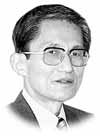[Friday Forum] Science Grows in Museum.
[Friday Forum] Science Grows in Museum.
Posted July. 27, 2001 08:14,

`Only one testing tube turns over the whole world. The winner in science will be the winner of everything. Let us stimulate the movement of science dissemination to general public.`
This was the slogan of `Science day’ on April 19, 1934, which is the first day of science in our country. At that time, there were 800 participants in the science day ceremony in Seoul. On July 5 of the same year, `Science Knowledge Dissemination Association` was formed with 100 nation-wide leaders, including Yeo, Yoonhyung, Song, Jinwoo, Kim, Sungsoo, Kim, and Whalran. The association took over the `Science Chosun` magazine, which an invention association had been publishing, and made nation-wide road trips of the science seminars in order to expand the movement of `Chosun Science Dissemination`.
Let us look back on the editorial of Dong-A Ilbo dated on April 29, 1920. `To help science move forward, we need to have heart of active research, unbiased objective attitude, conclusive way of adoption, as well as to do experiments and give benefits to scholars. As we, Chosun, meet a new era, we need to emphasize mathematics, physics, chemistry and foreign languages in school ..`
Recently, a series of science dissemination movements are taking place. Two year ago, Dr. Lee, Yongsoo led a movement of `science book reading academy`. It was followed by `Science book start movement’, which is led by Minister of Science and Technology and Cardinal Kim, Soowhan. Also, Pohang University of Science and Technology (POSTECH) held a basic science culture forum titled `Great open discussion of science and technology for the people’.
Although there were other movements in the past (eg. `Scientification of the whole nation` during Park administration, `Peoples’ understanding of science and technology`), such popular science movement literally revived ever since the first `Science day` 60 years ago.
In any rate, all the past science movements vanished without leading to a fruitful achievement. Now it is time to reconsider the methodologies of the science dissemination or science-minded people cultivation. Mostly, the past movements consisted of mass media, talks, book readings, special events and so on.
However, it has been far away from experiencing the scientific behavior, such as seeing, touching and feeling. In addition, such activity was only temporary, not being done in permanent facility. Thus, why don’t we think about an alternative of the participation to enhance the previous levels so that it can be straightforward and effective?
It is `science and technology museum` that can answer the question. The museum can serve the general public by displaying and educating the science research processes and results, as well as technological inventions and discoveries. This will lead the viewers to think about the influences and values of science research for human beings and help them choose their future to come. For example, they may learn how beautifully the nature is made, how complicated and delicate each function is, and how closely the mutual connections are among the elements that consist the Earth.
The more important thing is that they may learn that science is not a mystery or legend but the ability we can also experience and accomplish individually. More meaningfully, such museum is the place of knowledge and information production, as well as education institution and creative idea-producing factory that might be inspired through a visit.
It is the borderline of people and science, as well as the place of science dissemination.
American Museum of Natural History located in Washington D.C. had more than 10 million viewers so far this year. The famous Chicago Museum of Science and Industry has an episode related to its establishment, in which Julius Rosenwald, businessman, had hard time locating his little son, who was lost because he was absorbed in the exhibition, when he visited the Deutch Museum in Munich, Germany in 1911. This museum, which opened in 1933, has more than 3 million viewers every year. Many teachers have hard time looking for students who would not go back to school being absorbed in science play.
In Japan, there are more than 400 science and technology museums. In contrast, we have no more than 10 museums. What should be thought first in order to make the science dissemination a routine activity? Why does the idea sound vain in this country where it has no science museum? We had better pay close attention to the fact that the number of Nobel prize winners, who are highly anticipated in our country, are proportional to the number of science and technology museums in each country.
Lee, Byunghoon (Professor in Biology Department of Jeonbuk National University)
Headline News
- Ukraine says N. Korea’s first troops arrive in Kursk
- N. Korea begins installing barriers on Donghae Line after 'bombing show'
- K-defense operating profit expected to jump by 200% in Q3
- Seoul City launches DDP rooftop tours, celebrating 10th anniversary
- Ahn Jung-geun’s historic writings return to Korea in 15 years







